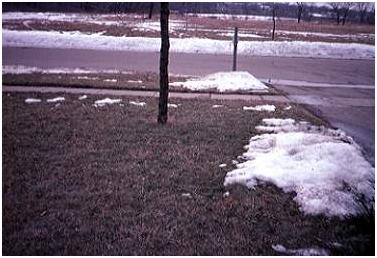Lawn and Landscaping Maintenance MN
Time to start thinking about that lawn again. If you’re like me you are tired of the snow and can’t wait to get out in the yard. Many of you may still have snow on the ground but there are some things you can do while you are waiting for the warmer weather.
First, stand back and take a look at your lawn.
Spreading out snow piles as the temperature finally starts to rise encourages the snow to melt more evenly. This helps to avoid many problems associated with heavy piles of snow. Large piles of snow on your lawn can lead to compaction and malign the soil’s ability to properly absorb air, water and nutrients. In addition, concentrated areas of snow pileup can create conditions that are ripe for lawn diseases such as snow mold once the snow starts to melt.
It is often the first disease of the year and may cause your lawn to have an unsightly appearance, especially after the snow melts. Snow Mold can even develop without snow cover. If it is cool, rainy, and overcast, then the disease can become active and affect your lawn. Spreading out the snow also will enable more even growth of your lawn and avoid bare patches. If a lawn becomes damaged or thins as a result of lawn diseases, it can often be repaired by overseeding or sodding.
There are ways to avoid snow mold from becoming a severe problem. Following a sound fertilization program, using fertilizers containing slow-release or controlled-release nitrogen. Adequate levels of phosphorus (P) and potassium (K) should be available in the soil.
Minnesota’s harsh climate is often responsible for severe damage to landscape plants. Winter sun, wind, and cold temperatures can bleach and desiccate evergreen foliage, damage bark, and injure or kill branches, flowerbuds, and roots. Snow and ice can break branches and topple entire trees. Salt used for deicing streets, sidewalks, and parking lots is also harmful to landscape plantings.
Although plant cold hardiness and winter injury are common concerns associated with Minnesota winters, appropriate plant selection, selecting the proper site, proper cultural practices, and preventive lawn maintenance can significantly reduce or prevent severe injury or loss of landscape plants.
Our lawn and garden fertilizer programs are scientifically designed to nurture the plants you want to thrive, while controlling weed growth and creating an environment in which harmful diseases and insects do not want to live.
The Lawn Care Company’ fertilizer specialists will examine your lawn and gardens, assess the health of your plants, measure thatch depth, note any weeds, insects or diseases that might be present, and do a soil analysis. Based on their findings, they will create a fertilization program to provide the nutrients necessary for your lawn and gardens. They will then review the plan with you to explain what they are doing and why they are doing it.
Over time, as the plan is implemented, you will watch your lawn and gardens grow thick, strong and healthy, providing the rich deep colors you always wanted.
We offer full service, total lawn care, or we can customize a package to meet your needs. Best of all, you will be shocked at the affordability of our services!

